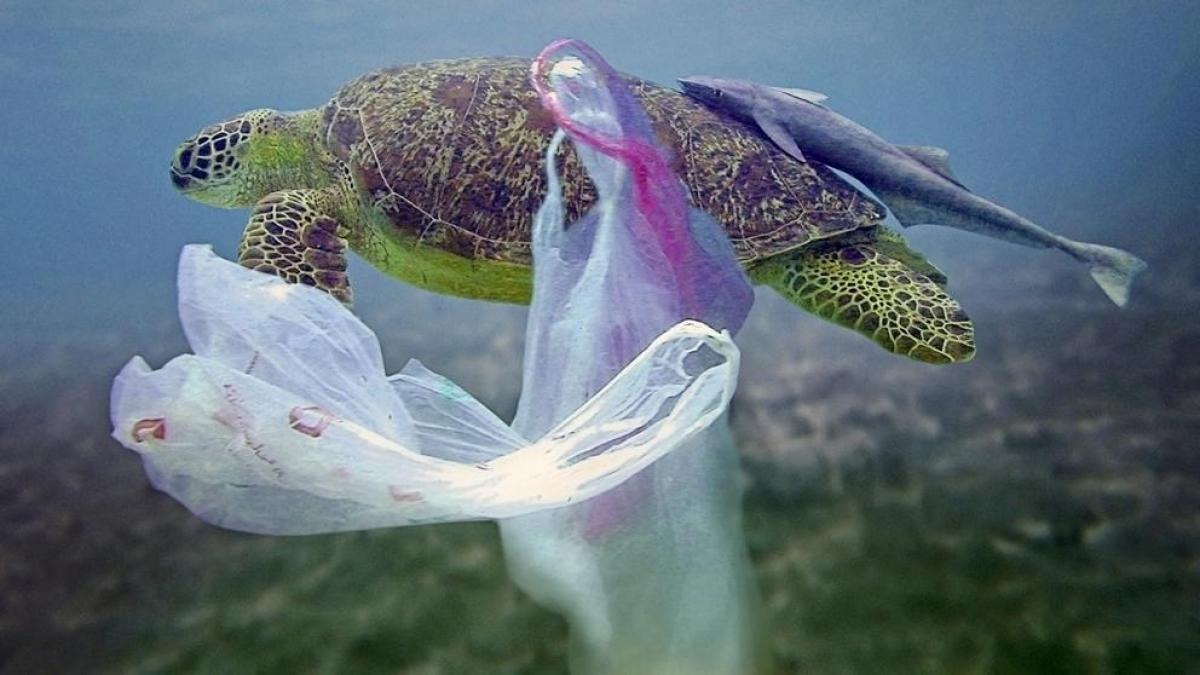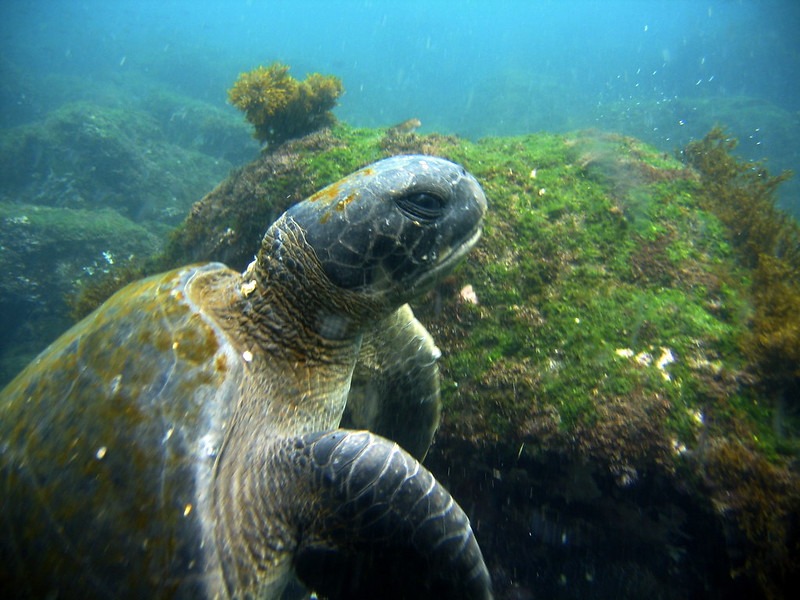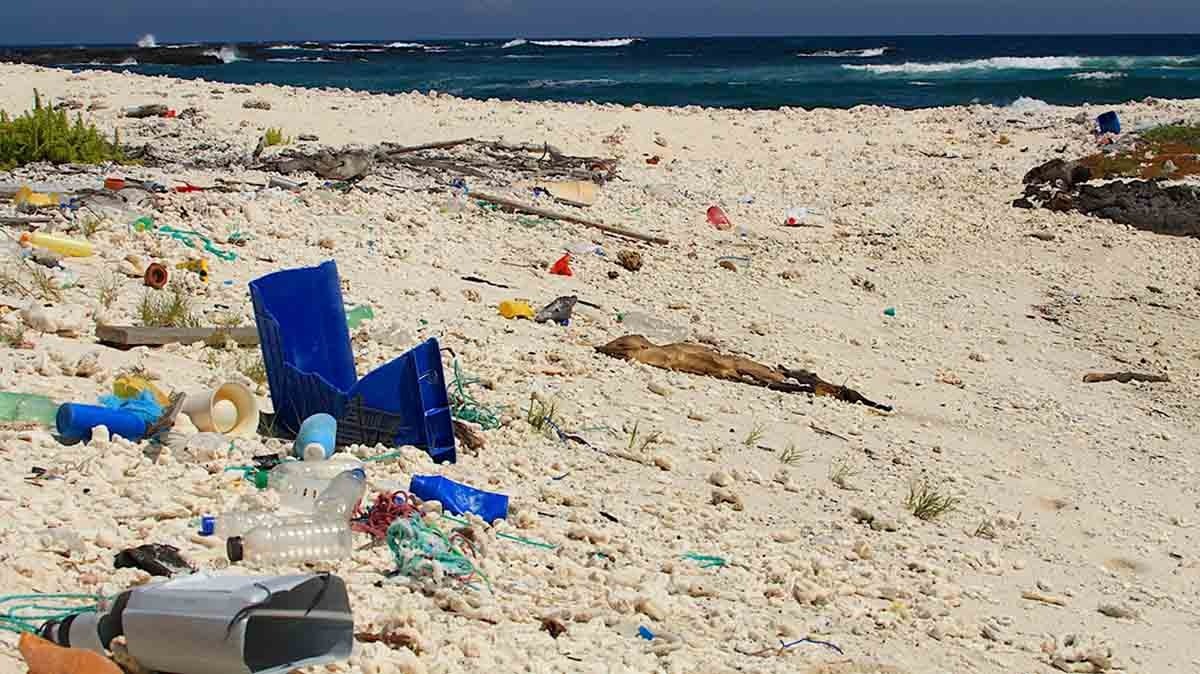A new study has shown that plastic pollution is causing an evolutionary trap for sea turtles.
The University of Exeter led a research team that discovered plastic in small juvenile turtles near the coasts of Australia's east (Pacific Ocean) as well as west (Indian Ocean).
The animals hatch on beaches and then travel on currents to spend their first years in open water. These currents can accumulate large quantities of plastic, and many young turtles inadvertently swallow it because they eat near the surface.
Researchers from Murdoch University, Queensland's Department of Environment and Science and Western Australia's Department of Biodiversity Conservation and Attractions were also part of the research team.
Dr Emily Duncan of the Centre for Ecology and Conservation at Exeter's Penryn Campus, Cornwall said that juvenile turtles evolved to live in open oceans, where predators are scarce. Our results show that their evolved behavior now puts them in a trap and brings them to highly polluted areas like the Great Pacific Garbage Patch.
"Juvenile turtles don't have a specialized diet. They eat whatever is available to them, and our study shows that this includes plastic." Although we don't know the impact of plastic on juvenile turtles at this stage of their lives, any loss could have a significant effect on the population.

Researchers evaluated the juvenile sea turtles, from hatchlings up to 50cm in length, that were either accidentally or intentionally caught by fishermen off the Australian coasts.
The study involved 121 sea turtles representing five of seven species of sea turtles around the globe: green, flatback, loggerhead and hawksbill. The data showed that plastic content in turtles was much higher along the Pacific coast, where there were 86 percent of loggerheads, 83% of greens, 80% of flatbacks and 29% of olive ridleys. 28% of flatbacks on the Indian Ocean coast were made of plastic, as well as 21 percent of loggerheads and 9% of green turtles.
A new study has shown that plastic pollution is causing an evolutionary trap for sea turtles.
The University of Exeter led a research team that discovered plastic in small juvenile turtles near the coasts of Australia's east (Pacific Ocean) as well as west (Indian Ocean).
The animals hatch on beaches and then travel on currents to spend their first years in open water. These currents can accumulate large quantities of plastic, and many young turtles inadvertently swallow it because they eat near the surface.
Researchers from Murdoch University, Queensland's Department of Environment and Science and Western Australia's Department of Biodiversity Conservation and Attractions were also part of the research team.
Dr Emily Duncan of the Centre for Ecology and Conservation at Exeter's Penryn Campus, Cornwall said that juvenile turtles evolved to live in open oceans, where predators are scarce. Our results show that their evolved behavior now puts them in a trap and brings them to highly polluted areas like the Great Pacific Garbage Patch.
"Juvenile turtles don't have a specialized diet. They eat whatever is available to them, and our study shows that this includes plastic." Although we don't know the impact of plastic on juvenile turtles at this stage of their lives, any loss could have a significant effect on population levels.
Researchers evaluated the juvenile sea turtles, from hatchlings up to 50 cm in length, that were either accidentally or intentionally caught by fishermen off the Australian coasts.

The study involved 121 sea turtles representing five of seven species of sea turtles around the globe: green, flatback, loggerhead and hawksbill. The data showed that plastic content in turtles was much higher along the Pacific coast, where there were 86 percent of loggerheads, 83% of greens, 80% of flatbacks and 29% of olive ridleys. 28% of flatbacks on the Indian Ocean coast were made of plastic, as well as 21 percent of loggerheads and 9% of green turtles.
Although no plastic was found on either coast in hawksbill turtles, seven were discovered so the sample was too small to make any definitive conclusions.
Researchers found that plastic found in Pacific turtles consisted mainly of hard fragments. This could be from a wide range of products. Indian Ocean plastics contained mostly fibres. Polyethylene and polypropylene were the most common polymers that turtles ingest in both oceans.
Dr Duncan stated that "these polymers are so widespread used in plastic products that we can't pin down the likely source of the fragments found." The average length of hatchlings was between 5 and 10 millimeters, with larger particles corresponding to the turtle's size.
"The next step in our research is to determine if and how plastic intake affects the survival and health of these turtles." This will require close collaboration between researchers and veterinarians from around the globe.
The Sea Life Trust funded the study and National Geographic Society published it in the journal Frontiers in Marine Science.
The problem of plastic pollution in the world's oceans continues to be a key area of focus for environmental scientists. According to a recent study by researchers from Sweden, Norway and Germany, the current rates of plastic emissions constitute a global threat and may trigger effects that we will not be able to reverse. The study concluded that steps to reduce plastic emissions in the environment are the "rational policy response".

Plastic pollution has a wide-ranging impact on our environment. This is further demonstrated by the alarming discovery that plastics were found in the seawater, beaches, and marine animals of the Galapagos Islands. There were up to 400 plastic particles per square metre on the beaches of all marine habitats around San Cristobal Island, where Charles Darwin first arrived in Galapagos.
The build-up of microplastics in seafoods affects all living creatures - including humans. According to another study, the threat is not underestimated. Microplastics may carry potentially dangerous bacteria like E.coli higher up in the food chain.